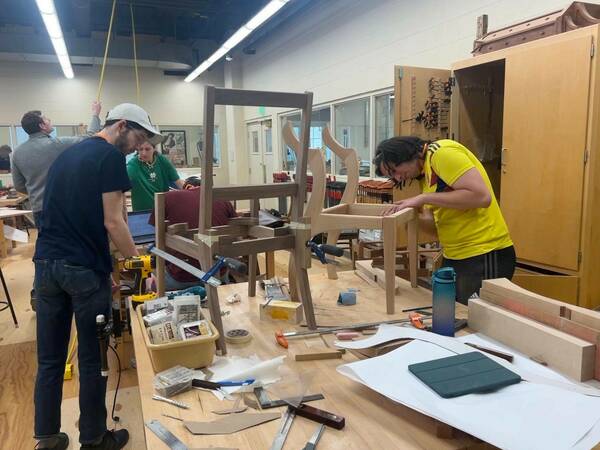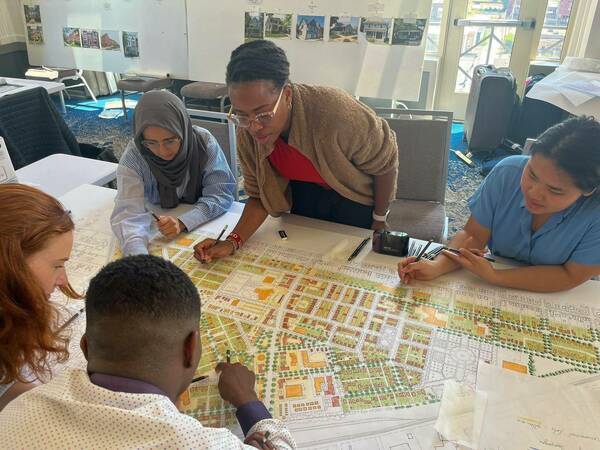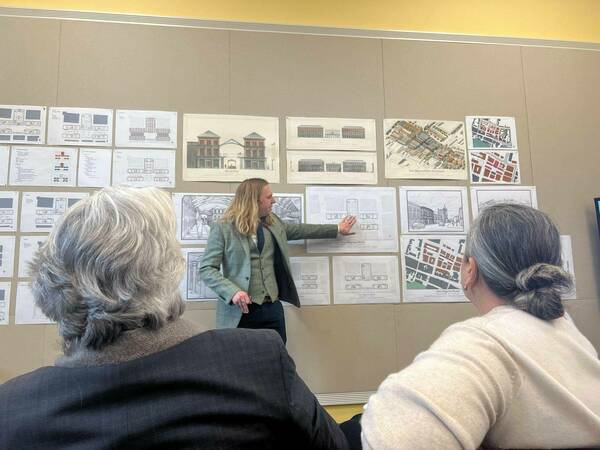Updated: August, 2023
Architecture
Overview: Restoring Reason, Hope, and Faith in Architecture
The mission of the School of Architecture is to educate leaders in traditional architecture and urbanism and to address the critical issues facing the built environment through research, professional activity, and public service. Traditional architecture and urbanism include the civic (classical) and the private (vernacular) scales across multiple cultural contexts throughout the world. The school aspires to be a leading voice in the academic, professional, and lay discussions about how people should live together (urbanism) and build together (architecture), one that inspires students to construct a future at once more humane, functional, just, and beautiful.
This approach is predicated on the idea that architecture and urbanism do more than merely provide the shelter where we live; they shape the public and private realms and therefore the ways in which we inhabit our planet and develop our cultures, economies, and futures. The program’s pedagogy is based on the assumption that in the design of cities and towns, neighborhoods, homes, offices, and parks, architecture should reflect our highest aspirations.
The School of Architecture emphasizes the enduring principles that encourage beauty, community, and sustainability. Using both the latest technology and time-tested techniques that were crucial to building practices throughout the world and across many traditions when sustainability was a necessity, the School has established itself as a major force in the modern green movement. This means it is part of a continuum from the past to the future, honoring the knowledge of grand traditions and carrying it forward with new ideas and technologies that aim to preserve the built and natural environments.
Lessons learned from tradition continue to be relevant to resolving tomorrow’s problems. It is the inventive quality of tradition that allows each generation to shape the future in its own manner, and it is tradition’s projection of the past that provides the sense of stewardship that is required for sustainability. It is an inheritance and legacy at once local in scale, global in scope, and enduring in aspiration.
News
Architecture and urbanism do more than merely provide the shelter where we live; they shape the public and private realms and therefore the way in which we inhabit our planet and develop our cultures, economies, and futures.
Goals
Architecture has identified four overarching goals as part of its strategic planning process, each of which advances one or more of the five University-wide goals:
1. Raise the School’s research profiles
Objectives

-
-
Establish three- and five-year research plans involving the majority of the faculty. Engage other Notre Dame schools and colleges in school research initiatives. Promote research findings to the academy, the profession, and the public at large.
-
Launch a Mediterranean Initiative for Architecture, Urbanism, and the Landscape in Rome with connections to Athens and Jerusalem, to advance research in Traditional Architecture and connect the school with some of the world’s finest academic and practicing architects.
- Establish an Adaptive Buildings and Cities Initiative. Create designs and policies that are culture- and climate-diverse and are also aligned with new traditional architectural and urbanist principles.
- Expand the Housing and Urban Regeneration Initiative to generate policy and design research while serving municipalities in need.
-
2. Expand the impact of the School’s unique pedagogy in architectural practice and the academy.
Objectives

-
-
Outreach to institutions, governments and communities in Europe and the Global South to offer the School’s pedagogy as a means of revitalizing unique local academic and design traditions.
-
Launch and support multidisciplinary design studio teaching on topics that are pedagogically vital and in places that need insight and aid.
-
Prepare students to lead the architectural profession by addressing the critical issues of the present and future, urban growth, cultural memory loss, heritage conservation, nature stewardship, and environmental justice.
-
Initiate a conference and publications program that promotes traditional architecture and urbanism to other institutions and professional societies in the United States and abroad.
-
3. Enhance the School’s graduate programs and interdisciplinary partnerships on campus.
Objectives

-
-
Attract the best students from both the United States and abroad to join our graduate programs on a tuition-free basis. Enlarge the various graduate programs to a total of 80 students annually.
-
Initiate a post-graduate Athens Prize concentrating on a year-long academic or design track.
-
Enhance collaboration between the Fitzgerald Institute for Real Estate (FIRE) and the School of Architecture by joint hiring, research, studio, and course offerings.
-
Explore joint programming and joint appointments with the College of Engineering, the College of Arts and Letters, and the Keough School to expand the range and complexity of our academic offerings.
-
4. Continue to refine the School’s signature undergraduate programs in South Bend and Rome.

Objectives
-
- Establish a stable incoming class of 60 students per year to better utilize existing facilities and respond to the intense demand for our graduating students by the architectural profession.
- Expand opportunities for students to enlarge their academic horizons beyond the constraints of their professional education, through deeper engagement with the Arts and Humanities.
- Enrich student learning by expanding support for international studio travel that relates to both studio teaching and research activities.
-
Seek to procure more physical space than is currently available at Walsh Family Hall of Architecture, for reviews, classrooms, studios, meeting rooms, and offices.
5. Address the climate crisis.
Objectives
- Develop a more integrated curriculum that combines architecture and urbanism with landscape architecture and environmental design.
- Focus on developing a post-sprawl urban growth model through policy and design initiatives that produce compact, efficient, durable, low-waste cities in balance with nature.
- Focus on developing appropriate design and building strategies through both high and low construction technologies that are tailored to improve the durability and energy performance of common buildings.
- Assist cities, countries, and regions throughout the Global South to develop built environments that are finally consistent with their own cultures, climates, aspirations, means, and true needs.
Learn more about the School of Architecture by visiting architecture.nd.edu.
